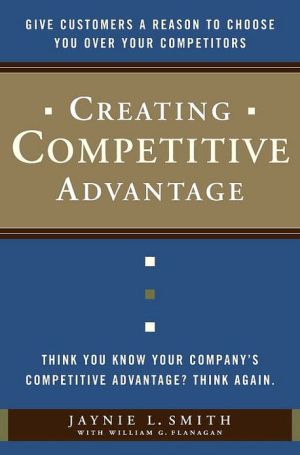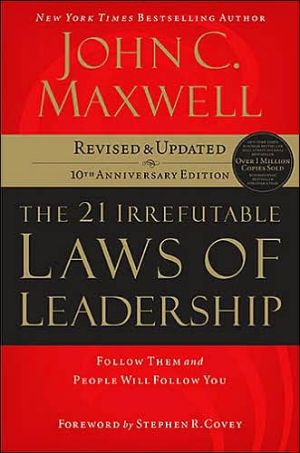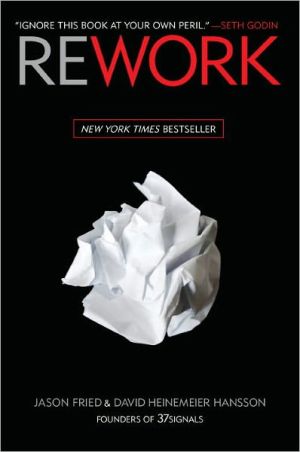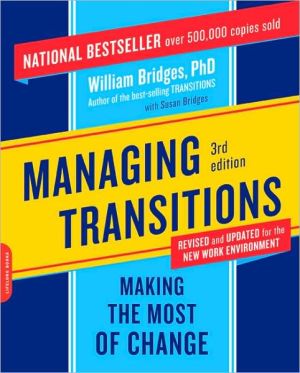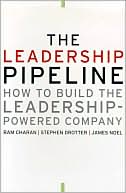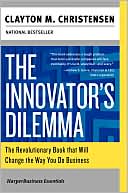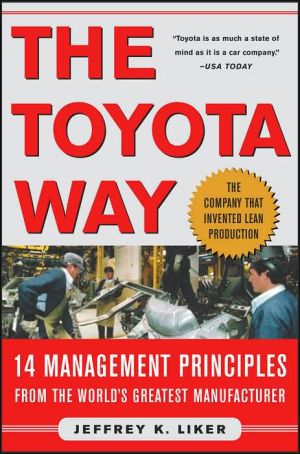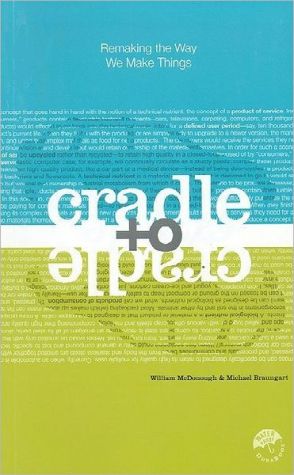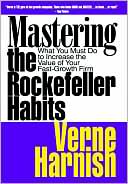Creating Competitive Advantage: Give Customers a Reason to Choose You Over Your Competitors
Why should I do business with you… and not your competitor?\ Whether you are a retailer, manufacturer, distributor, or service provider – if you cannot answer this question, you are surely losing customers, clients and market share. This eye-opening book reveals how identifying your competitive advantages (and trumpeting them to the marketplace) is the most surefire way to close deals, retain clients, and stay miles ahead of the competition.\ The five fatal flaws of most companies:\ •...
Search in google:
Why should I do business with you… and not your competitor?Whether you are a retailer, manufacturer, distributor, or service provider – if you cannot answer this question, you are surely losing customers, clients and market share. This eye-opening book reveals how identifying your competitive advantages (and trumpeting them to the marketplace) is the most surefire way to close deals, retain clients, and stay miles ahead of the competition.The five fatal flaws of most companies:• They don’t have a competitive advantage but think they do• They have a competitive advantage but don’t know what it is—so they lower prices instead• They know what their competitive advantage is but neglect to tell clients about it• They mistake “strengths” for competitive advantages• They don’t concentrate on competitive advantages when making strategic and operational decisionsThe good news is that you can overcome these costly mistakes – by identifying your competitive advantages and creating new ones. Consultant, public speaker, and competitive advantage expert Jaynie Smith will show you how scores of small and large companies substantially increased their sales by focusing on their competitive advantages. When advising a CEO frustrated by his salespeople’s inability to close deals, Smith discovered that his company stayed on schedule 95 percent of the time – an achievement no one else in his industry could claim. By touting this and other competitive advantages to customers, closing rates increased by 30 percent—and so did company revenues.Jack Welch has said, “If you don’t have a competitive advantage, don’t compete.” This straight-to-the-point book is filled with insightful stories and specific steps on how to pinpoint your competitive advantages, develop new ones, and get the message out about them. Soundview Executive Book Summaries What makes you better than your competitors? Marketing expert Jaynie L. Smith writes that if you don't know this, you are losing money and market share. In Creating Competitive Advantage, Smith describes how competitive advantages are developed, and how companies use these advantages to impress customers and increase sales. With dozens of examples, Smith explains the difference between strengths and competitive advantages while outlining a complete competitive advantage strategy for companies in middle markets. Copyright © 2006 Soundview Executive Book Summaries
Creating Competitive Advantage\ \ By Jaynie L. Smith with William G. Flanagan \ Random House\ Jaynie L. Smith with William G. Flanagan\ All right reserved.\ ISBN: 0385517092 \ \ \ Chapter One\ CHAPTER 1\ Competitive Advantage Is the Reason You're in Business\ \ Competitive Advantage is what separates you from the rest of the herd. It's what keeps your business alive and growing. In short, it's the reason you are in business. Yet the biggest marketing flaw in most companies is their failure to fully reap the benefits of their competitive advantages. Either they think they have a competitive advantage but don't. Or they have one and don't even realize it. Or they know they have a strong competitive advantage but fail to promote it adequately to their customers and prospects.\ \ In my research with middle-market companies, I found only two CEOs out of 1,000 who could clearly name their companies' competitive advantages. The other 99.8 percent could offer only vague, imprecise generalities. These same CEOs often rely on outside consultants to guide strategic planning sessions. Yet, in my experience, very few consultants--even seasoned ones--give competitive advantage evaluation more than a superficial glance. Why? I wonder. And no matter the size of your company or the kind of business you are in, your competitive advantages should be the foundation of all your strategic and operational decisions. Ignoring them can be an expensive and even fatal mistake.After all, they're the reason customers choose to buy from you instead of the other guy. Without this edge, you will lose customers. Eventually, you will go out of business.\ \ On the other hand, if you properly identify and exploit your competitive advantage, it will impact your bottom line early and often. Because your competitive advantage can be your deal closer. It answers the customer's key question: Why should I do business with you? What are you offering that the other guy doesn't?\ \ If you can articulate a clear, specific reply to that question, you have your competitive advantage. If you can't, this book will show you how.\ \ THE BIGGEST THREAT IS THE ONE YOU DON'T SEE\ \ It's easy for today's business managers to lose sight of the basics as they focus their attention on a host of other reasons why their margins may be shrinking. You read and hear a lot about the threats of offshore outsourcing. You worry about falling behind in your use of new communications tools and in making the most of the Internet. These threats are certainly real, but you'll never have to deal with them if a more basic problem undermines your company.\ \ In the U.S. Army, young recruits are taught this life-or-death lesson during combat field training. The recruits are alerted that three snipers (played by other soldiers) are crawling through the grass toward them.\ \ As they wait for the aggressors to advance, suddenly, across the field, a figure pops up, and the recruits begin firing (using blanks). A little closer in, another figure pops up, and again the recruits direct their fire to that target. Two seconds later, the platoon is "annihilated" by hand grenades tossed by the third aggressor, who has managed to sneak up right next to the platoon while they fired at distant targets. The platoon was "wiped out" because it failed to act against the closest, and therefore the most serious, threat.\ As a business manager or owner, the biggest threat you face is losing sight of your most important target--your customer. He is the one who can blow up your business simply by going elsewhere. You may play golf with him, bend over backward to rush a delivery to him, and even consider him a friend. But you can lose him to a competitor if you lose sight of your competitive advantage.\ \ Too often, managers who see their businesses drifting and their margins shrinking will try to compete based on price. But the manager who drops his prices while his market share is shrinking is courting tragedy. It's like that old joke: "He's losing $3 on every shirt he sells, but he hopes to make it up on volume."\ YOU'RE NOT WAL-MART\ \ Most businesses cannot exist by being the lowest-cost providers. Wal-Mart can, but you probably can't. Still, too many companies allow price to be their only differentiator. They tout their prices even in the era of the Internet, where the click of a mouse almost always leads to a lower price. All those companies racing to the bottom are ignoring this vital fact: Price isn't everything. When you compete on price, you're accepting commodity status.\ \ In my work with clients, we do not even discuss price. Play the price game and you are tossing margins to the wind. You become a commodity supplier rather than a marketer, and unless you enjoy vast economies of scale like Wal-Mart, you'll eventually find yourself whistling through the graveyard.\ \ There are other ways to help your customers cut costs that have nothing to do with lowering your prices. If your products and services are more reliable, you can save customers costly downtime. Your service might be worth more because you provide it 24/7. Your products might be worth more because they are demonstrably better than the other guy's--or because you are the only company in the business that offers guarantees, free installation, free replacement, or employee training. Packaging, too, can make a critical difference.\ \ To remain competitive, you have to become more conscious about why you are in business in the first place and what you are delivering that makes you unique. In the following pages, I will show you how you can continually increase your sales and profits by identifying and maximizing your competitive advantages. It's a basic, proven concept that will dramatically increase the number of deals that you close. Warning: It may force you to rethink the way you compete.\ \ My "formula" applies to all companies regardless of product or service, size, or volume. It doesn't matter if you are selling fish sticks, furniture design, or financial services. Customers are customers.\ BEEP--YOUR TABLE IS READY\ \ One of my favorite small-company success stories is JTECH, a company that created a paging system for restaurants. If you have ever walked into an Outback Steakhouse, you are familiar with JTECH's product. It's a nifty, coaster-size pager that alerts you when your table is ready. Developed back in the 1980s, the paging system was the brainchild of Dave Miller and Jeff Graham. Graham was an investor and Miller a partner and operating manager of a barn-size restaurant named Mr. Laffs, located on the Intracoastal Waterway in Jensen Beach, Florida. The place was doing very well and one busy Sunday seated a record 1,100 people, who spent a combined $40,000 that day.\ A few days later, Miller was out on the golf course with some friends, feeling pretty good about himself and his business, until his pals darkened his mood. They all frequented Mr. Laffs, and they were not happy.\ \ "It's too long a wait for a table," one friend told him. "I had to walk out."\ \ Miller felt as if his wallet had been stolen. Walkaways are to a restaurant manager what casualties are to a general in combat. You lose enough of them, and your fighting days are over. Walkaways not only represent immediate loss of business; they spread the bad word that you can't get a table, so don't bother trying. In the immortal words of Yogi Berra, when describing the original Mr. Laffs in New York City, "Nobody goes there anymore, it's too crowded."\ \ Miller and his partners had a serious problem. Diners often had to wait too long to be seated, so some customers walked. Yet even as some folks were strolling out of the place, tables were becoming free all over the sprawling restaurant. There had to be a better way of getting fannies to the tables, and keeping customers happy enough to wait when necessary.\ \ Graham, a former executive with Pratt & Whitney, along with Miller and their team, proposed using a basic paging system so the staff could communicate better.\ Using an old Atari game cartridge, a pager housing a computer, and radio frequency technology they had developed in a prior venture, the team cobbled together a simple on-site paging system. Waiters and managers carried the pagers and devised codes for different messages. One beep might mean a table was ready for seating, for example. Two beeps meant food was ready for pickup. Three beeps indicated a dirty table, four beeps that there was an upset customer.\ \ "It was primitive, but it worked," Miller recalls. "We had fewer walkaways. It made a difference."\ \ It made an even bigger difference when Mr. Laffs began handing out its pagers to the customers themselves. Instead of nervously hanging around the hostess desk, listening for their names to be called or flashed on an unsightly screen, diners could relax at the bar and wait for their beepers to flash or vibrate to announce that their tables were ready. "Customers knew we weren't about to ignore them, since they had our beepers," Miller said.\ \ The paging system soon paid for itself many times over. Within months, other restaurant owners in the area were asking about the system and how they could acquire one. Meantime, Miller and Graham kept tinkering with improvements and refinements. It didn't take long for them to realize that they had a potentially dynamite business on their hands. They took off their aprons and started JTECH Wireless Solutions, supplying paging systems to restaurants and other businesses.\ \ Despite some early successes, JTECH had trouble convincing major restaurant chains to invest in the new system. So Miller and his sales team did cost analyses to show how the new system slashed the number of walkaways and otherwise increased efficiency. The chains listened harder. They tested the new system. And eventually, they bought it.\ \ Houston's, which then had some thirty-five outlets, signed on. Outback Steakhouses, then with sixty-five stores, soon followed suit. Other chains and major independent restaurants followed: Darden Restaurants, Brinker International, Longhorn Steakhouse, TGI Friday's, Legal Seafood, PF Chang's China Bistro, Champps Americana, Panera Bread, Schlotzkey's Deli, Atlanta Bread Company, Angus Barn, Tavern on the Green, and Scoma's.\ \ JTECH was on a roll. By this time, Miller and his partners had leased their restaurant and were involved full-time with their increasingly sophisticated paging systems, looking for new markets beyond the restaurant trade. Soon the business expanded to the entire hospitality industry, from restaurants and hotels to bars, nightclubs, casinos, country clubs, and cruise ships. New markets popped up like mushrooms after a hard rain, not always where expected.\ \ Automobile dealers and auto service centers began signing up, as well. They used the system to locate sales staff faster, to improve communications among staff, and to alert customers when their cars were finished with servicing.\ \ Best Buy, the giant electronics chain with close to 700 outlets, now hands out JTECH beepers to customers while they wait for their computer systems to be configured, upgraded, or repaired. Target stores, with more than 1,100 stores in forty-seven states, has been supplying JTECH pagers to customers waiting for drug prescriptions to be filled at their in-store pharmacies. While they wait, they shop.\ \ "We started getting calls every Monday from Baptist churches," Miller says. "They wanted to use paging systems in their nurseries to signal parents. We could never figure out why we got so many of those calls on Mondays, until we realized that churchgoers were seeing the system at work in restaurant chains over the weekend. They saw its potential for their own churches and promptly called us on Monday mornings."\ \ Hospitals and health care providers began calling. Dozens of shopping malls became customers--especially at Christmas, when kids come to see Santa. When the elves are nearly ready to bring the kids to the big guy, parents get paged. Miller even had a request to develop a system to help train Dalmatians. Many of the breed are deaf, making then hard to train. But JTECH developed a small handheld transmitter that gives off a gentle vibration to prompt the dog to look at its trainer to heed hand signals.\ \ JTECH was doing fine, but soon it had competition. A few other companies popped up around the country offering the same kind of device. Eventually, Motorola waded in. "Motorola made a serious run at this business in 1995 and 1996," Miller recalls. After all, the name Motorola was practically synonymous with pagers.\ \ "We had been in business for years, and we felt we knew the needs of our customers better than Motorola or anyone else. But how could we prove it on the spot to a new customer?"\ \ It was a nagging question, as Motorola wasn't the only company jealously eyeing JTECH's growth. What could JTECH say that made it better than the competition? Unsure of the answer, in 1999, Jeff Graham, then president of the company, called me and scheduled one of my workshops on competitive advantage.\ \ At the workshop, JTECH executives set about determining exactly what the company's strongest competitive advantage was. Its service was great, its equipment top of the line, its costs competitive. But that's what the competition said, too. JTECH needed a simple, strong, accurate, and convincing statement to differentiate itself from its competitors.\ \ The JTECH team brainstormed at the workshop and afterward to determine and articulate JTECH's best competitive advantage--in straightforward, quantifiable terms. They kicked it around among themselves, asked their customers, and finally nailed it down:\ \ Of the fifty largest chains who use paging, 100 percent use JTECH.\ \ That one statement was better than a royal warrant-- it put the competition on the ropes. Restaurant chains are notoriously tough sells, but JTECH had won them over and kept them on. JTECH quickly adopted the slogan and made it a mantra. Customers responded. Sales closed faster. Competitors couldn't counter that message.\ \ "People who make the decisions to invest in things like the paging system cannot afford to make mistakes," Graham says.\ \ Continues... \ \ \ \ Excerpted from Creating Competitive Advantage by Jaynie L. Smith with William G. Flanagan Excerpted by permission.\ All rights reserved. No part of this excerpt may be reproduced or reprinted without permission in writing from the publisher.\ Excerpts are provided by Dial-A-Book Inc. solely for the personal use of visitors to this web site. \ \
\ Soundview Executive Book SummariesWhat makes you better than your competitors? Marketing expert Jaynie L. Smith writes that if you don't know this, you are losing money and market share. In Creating Competitive Advantage, Smith describes how competitive advantages are developed, and how companies use these advantages to impress customers and increase sales. With dozens of examples, Smith explains the difference between “strengths” and competitive advantages while outlining a complete competitive advantage strategy for companies in middle markets. Copyright © 2006 Soundview Executive Book Summaries\ \
